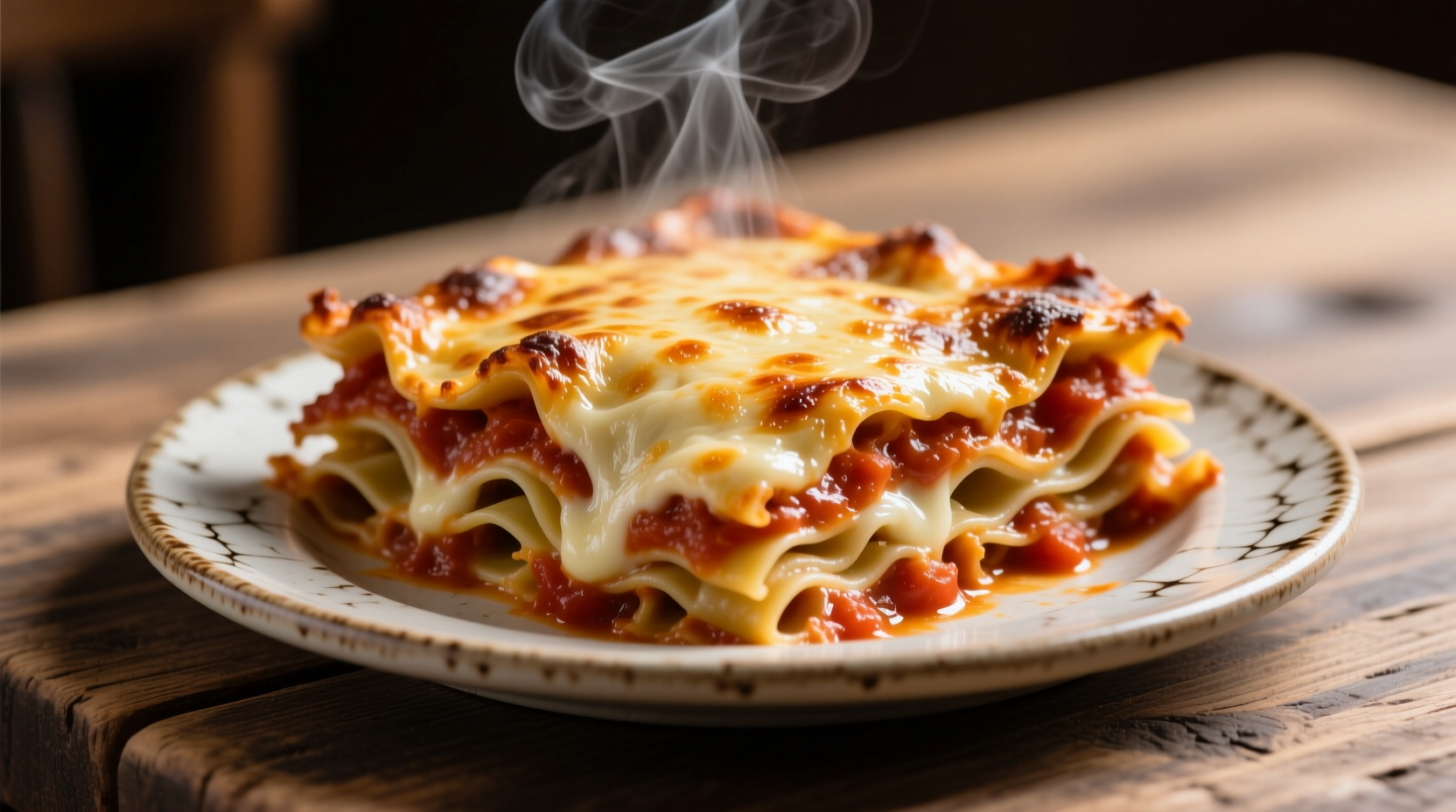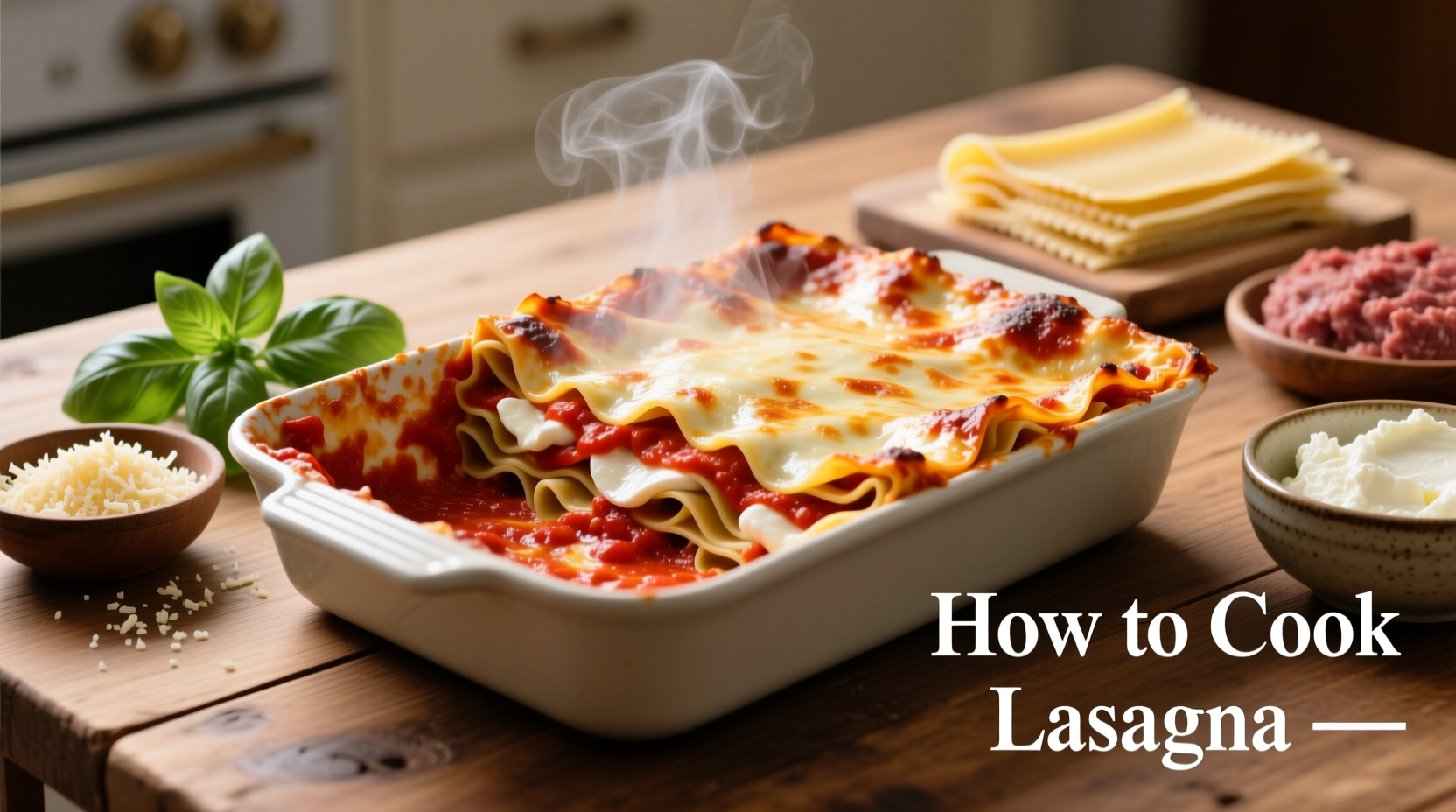Essential Tools for Perfect Lasagna
Before gathering ingredients, ensure you have these kitchen essentials:
- 9x13 inch baking dish (ceramic or glass)
- Large pot for boiling noodles
- Wooden spoon for gentle sauce stirring
- Meat thermometer (for ground beef)
- Colander with fine mesh
- 9-inch square foil pan (for make-ahead storage)
Authentic Lasagna Ingredients Guide
Traditional Italian lasagna uses fresh pasta sheets, but dried noodles work perfectly for home cooking. Here's what you need for a classic meat lasagna serving 8-10 people:
| Ingredient | Amount | Professional Tip |
|---|---|---|
| Lasagna noodles | 12 sheets | Use no-boil noodles to prevent sogginess |
| Ground beef (80% lean) | 1 lb | Combine with 1/2 lb Italian sausage for richer flavor |
| Marinara sauce | 4 cups | Simmer with fresh basil for 20 minutes |
| Ricotta cheese | 2 cups | Mix with 1 egg to prevent separation |
| Mozzarella | 3 cups shredded | Use low-moisture variety for better melting |
| Parmesan | 1 cup grated | Freshly grated works best - avoid pre-grated |
Step-by-Step Cooking Process
Prepare Your Components (20 minutes)
Cook ground beef and Italian sausage in a large skillet over medium heat until internal temperature reaches 160°F. Drain excess fat but retain 1 tablespoon for flavor. Add marinara sauce and simmer uncovered for 15 minutes to develop depth. In a separate bowl, combine ricotta, egg, 1/2 cup Parmesan, and 1 teaspoon dried basil.
Assemble Layers Perfectly (15 minutes)
Spread 1 cup meat sauce on the bottom of your baking dish. Layer in this order:
- 4 lasagna noodles (slightly overlapping)
- 1/3 ricotta mixture (dolloped evenly)
- 1 cup meat sauce
- 1 cup mozzarella
Repeat layers twice, finishing with meat sauce and remaining cheeses. Cover top layer completely to prevent dry edges.
Baking for Optimal Results (55 minutes)
Cover dish with aluminum foil (tented to prevent cheese sticking). Bake at 375°F for 25 minutes. Remove foil and bake 20-30 minutes until cheese is golden and bubbly. The internal temperature should reach 165°F. Let rest 15 minutes before cutting - this crucial step prevents collapse.

Lasagna Evolution Timeline
Understanding lasagna's history helps appreciate authentic techniques:
- 4th century BCE - Earliest layered pasta dishes mentioned in Roman texts (Apicius cookbook)
- 14th century - First documented "lasagne" recipe in Italian manuscript Liber de Coquina
- 1881 - Modern lasagna recipe appears in Pellegrino Artusi's Science in the Kitchen and the Art of Eating Well
- Post-WWII - Americanized version with ricotta cheese becomes popular in the United States
- Today - Regional variations exist across Italy, with Northern versions using béchamel instead of ricotta
Troubleshooting Common Issues
Even experienced cooks encounter these problems. Here's how to fix them:
Soggy Lasagna
Cause: Excess moisture from noodles or sauce
Solution: If using regular noodles, boil 2 minutes less than package directions and rinse in cold water. For no-boil noodles, ensure sauce isn't too watery - simmer uncovered to reduce.
Dry Lasagna
Cause: Insufficient liquid or overbaking
Solution: Add 1/2 cup water or broth around edges before baking. Cover with foil if top browns too quickly. Check internal temperature at 45 minutes.
Layers Separating
Cause: Improper ricotta mixture or inadequate sauce
Solution: Always mix ricotta with egg. Ensure each noodle layer has complete sauce coverage - use 1 cup per layer minimum.
Storage and Reheating Guidelines
Proper storage maintains texture and flavor:
- Refrigeration: Store in airtight container for up to 5 days (USDA Food Safety Guidelines)
- Freezing: Wrap individual portions in foil then plastic - keeps 3 months
- Reheating: Thaw overnight in refrigerator. Bake covered at 350°F until internal temperature reaches 165°F (about 30 minutes)
- Single serving: Microwave 2 minutes with damp paper towel on top
Regional Lasagna Variations Comparison
Different Italian regions have distinct approaches to lasagna:
| Region | Key Characteristics | Best For |
|---|---|---|
| Naples (Southern) | Meat-heavy with sausage, pork, and beef ragù | Hearty family dinners |
| Bologna (Northern) | Béchamel sauce instead of ricotta, delicate meat sauce | Elegant dinner parties |
| Rome | Thin pasta sheets, tomato-based sauce with pecorino | Lighter meals |
| American Style | Ricotta cheese layer, often with cottage cheese substitution | Weeknight cooking |
Expert Tips for Restaurant-Quality Results
Professional chefs use these techniques to elevate home cooking:
- Noodle technique: If using regular noodles, add 1 tablespoon olive oil to boiling water to prevent sticking
- Sauce enhancement: Stir in 1/4 cup red wine to meat sauce for depth of flavor
- Cheese selection: Combine whole-milk mozzarella with provolone for better melt and flavor
- Resting importance: Never skip the 15-minute rest - it allows layers to set properly
- Flavor development: Make sauce one day ahead - flavors intensify overnight











 浙公网安备
33010002000092号
浙公网安备
33010002000092号 浙B2-20120091-4
浙B2-20120091-4